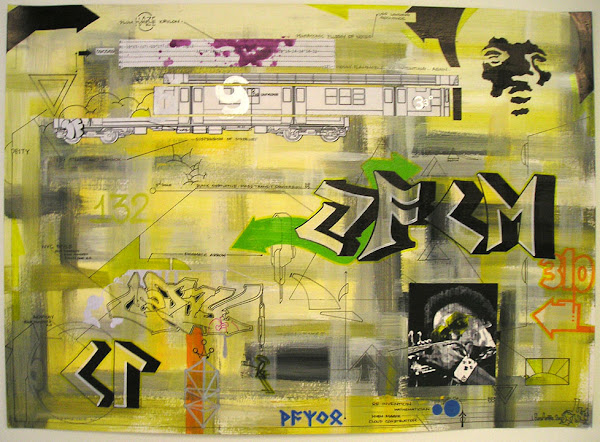 I once asked a fellow fountain pen collector, "What's your favorite pen?" She replied, "The next one that I'm going to buy." Ah, so true! Just when I think that I've found my Holy Grail of pens, another one catches my eye and the pursuit begins once again.
I once asked a fellow fountain pen collector, "What's your favorite pen?" She replied, "The next one that I'm going to buy." Ah, so true! Just when I think that I've found my Holy Grail of pens, another one catches my eye and the pursuit begins once again.I recently purchased an Aurora Talentum pen in black with silver trim and 14 karat gold italic nib. I already own an Aurora Talentum Finesse with an italic nib which is an exceptional writing instrument. The Finesse is slimmer than the regular Talentum and I was interested in the larger model with its added girth. It too is a wonderful writer. As a calligrapher I prefer writing with a chiseled nib. And then I espied the Stipula Gaudi Casa Batllo.
 Antoni Gaudi was a Catalonian architect born in Spain in 1852. He was a part of the Modernisme or Art Nouveau Movement, and is famous for his unique architectural style which emerged from the well spring of his imagination. His creations are so fantastic that it was once believed that he loaned his name to the term "gaudy." But, in truth Shakespeare used the term in Hamlet and King Henry the VI - "The gaudy blabbing and remorseful day is crept into the bosom of the sea." Here, Shakespeare used the word gaudy to mean festive. And Gaudi's architecture is festive to the extreme. Admittedly, I did not like Gaudi's work when I first saw pictures of it in books. Some years ago I traveled to Spain with Margie and Muggs, two members of the Sisterhood of the Silver Circle, and I had the chance to see Gaudi's creations up close and personal; they moved me. Who was this artist of unbridled imagination?
Antoni Gaudi was a Catalonian architect born in Spain in 1852. He was a part of the Modernisme or Art Nouveau Movement, and is famous for his unique architectural style which emerged from the well spring of his imagination. His creations are so fantastic that it was once believed that he loaned his name to the term "gaudy." But, in truth Shakespeare used the term in Hamlet and King Henry the VI - "The gaudy blabbing and remorseful day is crept into the bosom of the sea." Here, Shakespeare used the word gaudy to mean festive. And Gaudi's architecture is festive to the extreme. Admittedly, I did not like Gaudi's work when I first saw pictures of it in books. Some years ago I traveled to Spain with Margie and Muggs, two members of the Sisterhood of the Silver Circle, and I had the chance to see Gaudi's creations up close and personal; they moved me. Who was this artist of unbridled imagination?
When I returned stateside, I read a biography of Gaudi which gave me a deeper understanding of the man behind the artist. I learned that the Catholic Church was considering canonizing him as a saint but stopped short of doing so because he might have been a Freemason. As a Freemason myself this made Gaudi more endearing to me.
 The Stipula Gaudi Casa Batllo is a limited edition fountain pen. I purchased number 79/193. Which is to say that only 193 pens were manufactured in each of two versions. The first is black with silver and enamel accents the other in a pattern that's known as "cracked ice" with silver clip and band. In length and girth the pen is akin to a Montblanc 146 Le Grande. It takes a cartridge or a converter and is great as an everyday writer. My biggest decision was, what color ink should I fill it with. After hours of pondering, I settled on Private Reserves' Avocado which compliments the blue/green enameling on the cap and barrel.
The Stipula Gaudi Casa Batllo is a limited edition fountain pen. I purchased number 79/193. Which is to say that only 193 pens were manufactured in each of two versions. The first is black with silver and enamel accents the other in a pattern that's known as "cracked ice" with silver clip and band. In length and girth the pen is akin to a Montblanc 146 Le Grande. It takes a cartridge or a converter and is great as an everyday writer. My biggest decision was, what color ink should I fill it with. After hours of pondering, I settled on Private Reserves' Avocado which compliments the blue/green enameling on the cap and barrel.
In purchasing this pen I was most certainly driven by the theme, but I also had a familiarity with the Stipula product line. I own a Stipula Duetto in lemoncello with titanium nib, a wonderful writer that lays down a bold wet line of ink and affords contrast between thick and thin lines which lends character to one's script.
There are currently about six pen manufacturers that have pens with a Gaudi theme: ACME, Ancora, Pelikan, Caran d'Ache, Stipula, Montegrappa and Sailor. Most of the pens were created in 2002 in commemoration of the 150th Anniversary of Gaudi's birth. As most of the pens are limited editions (LE), there are very few available on the open market.

 If you have an interest in these pens I suggest that you act quickly as they will become rare very shortly.
If you have an interest in these pens I suggest that you act quickly as they will become rare very shortly.Scribo Ergo Sum.
Cliff Jacobs
Have Pen, Will Write























.jpg)


